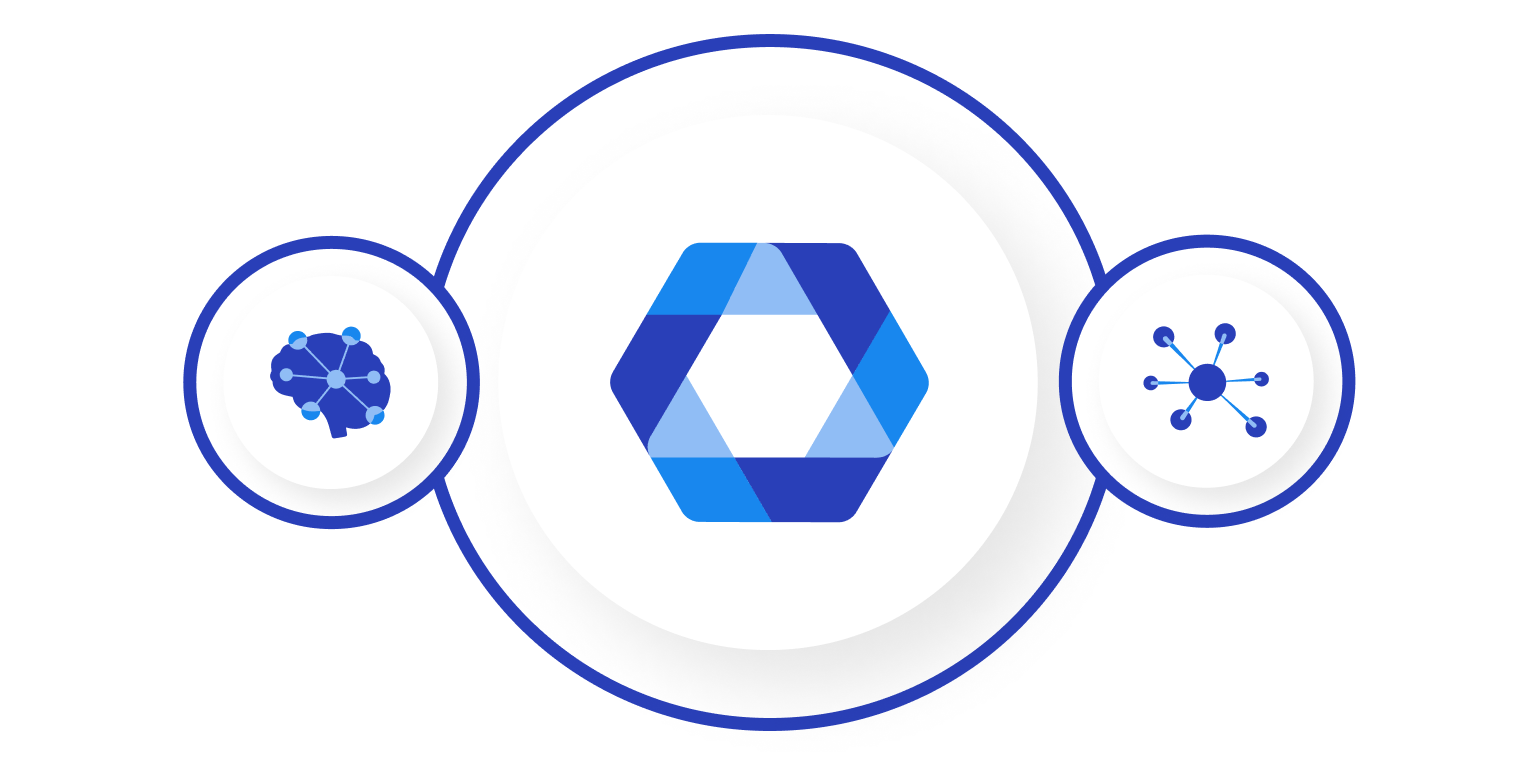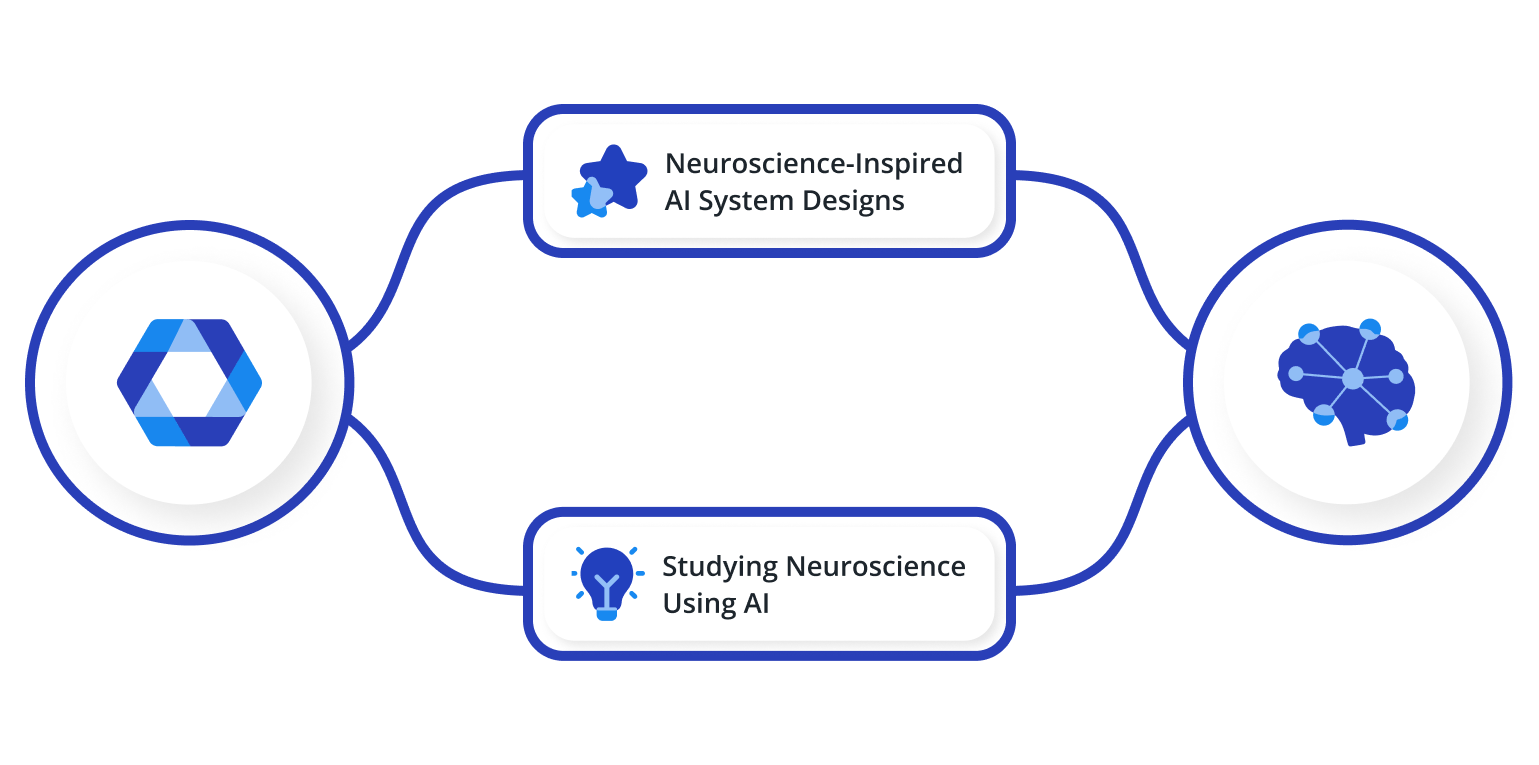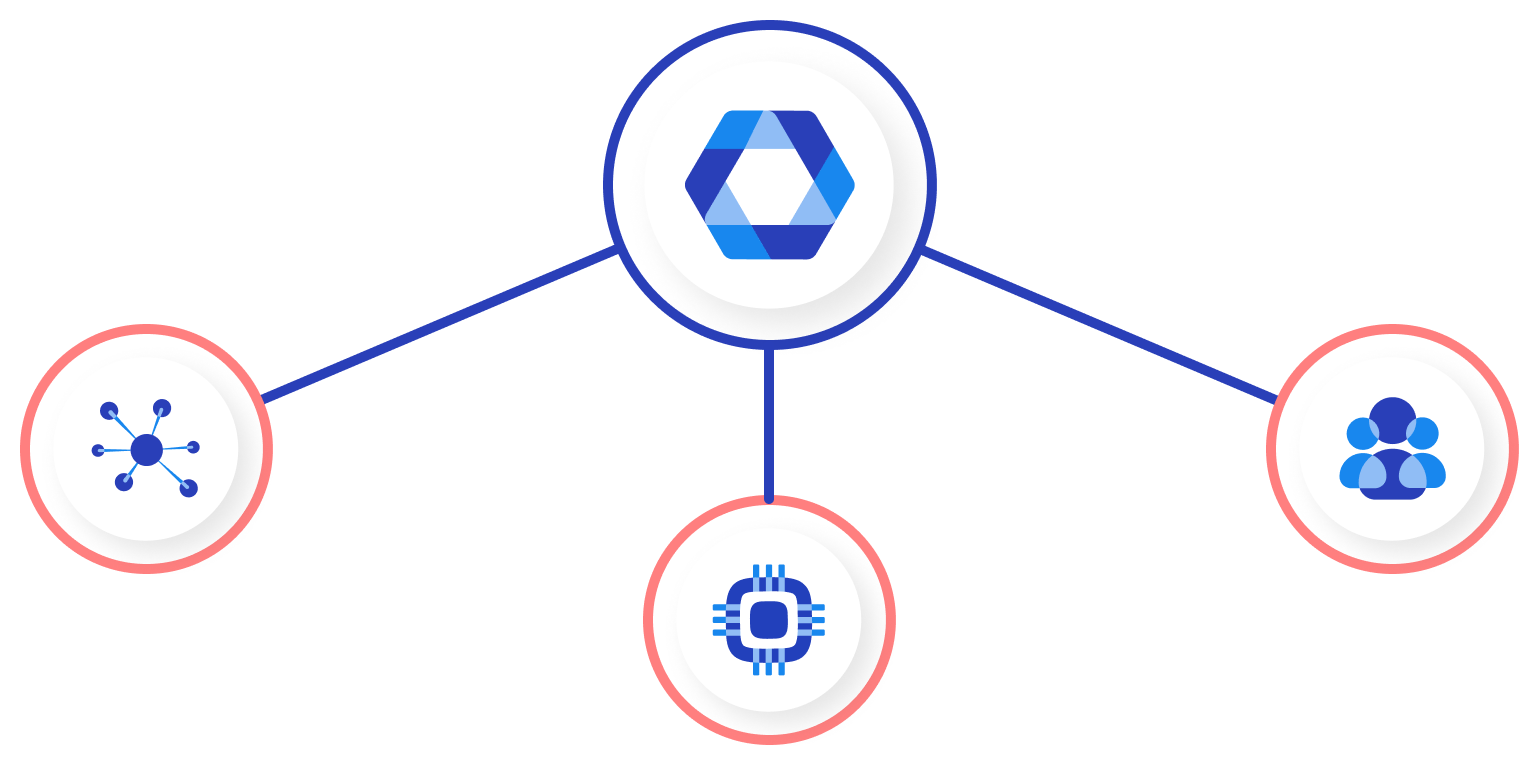In the world of technology, a unique alliance is forming, where two cutting-edge fields intersect: neuroscience and artificial intelligence (AI). This extraordinary union is drastically improving our understanding of the human brain. It creates innovative solutions and shapes a future we’ve only dreamed of.
But why is this partnership so promising? Let’s break it down in this article.
The Intersection of Neuroscience and AI
The combination of neuroscience and AI is an exciting mix that’s driving innovation and discovery in new areas. This convergence has sparked heated interest across sectors because of the shared goals of both fields: understanding and enhancing intelligence.
Neuroscience aims to explore the complex inner workings of our brain to understand our thoughts, behaviors, and interactions. Simultaneously, AI strives to imitate this intelligence using the power of computation to create systems that can learn, adapt, and make decisions.
This collaborative growth and learning are at the heart of many advancements. It pushes the boundaries of science, technology, and medicine to new frontiers.
The Fascinating Relationship Between AI and Neuroscience
The relationship between AI and neuroscience is mutually beneficial. Each field inspires the other, with discoveries in one fueling progress in the other.
AI Systems That Emulate Human Intelligence
One of the most intriguing aspects of AI is its ability to mimic human intelligence. This is largely inspired by neuroscience principles, which underscores the influence of the brain’s structure and function on AI design.
For instance, machine learning, a critical part of AI, relies on neuroplasticity – our brain’s dynamic ability to learn from experience, adapt to new situations, and improve its performance.
Machine learning algorithms reflect this adaptability by learning from errors, adjusting to new information, and getting better at decision-making. These use large amounts of data to identify patterns and make predictions, similar to how our brain learns from past experiences.
This shows how AI can imitate aspects of human intelligence and illustrates the vital role of neuroscience in AI development.
Building Neural Networks That Mimic Brain Structure
At the core of AI is the concept of neural networks, computational models that copy the complex structure of the human brain. These machine-driven networks are vast, interconnected systems of “neurons” that work together to process data, do complex calculations, and produce results.
Each “neuron” receives data, processes it (often in a non-linear way), and passes it on to the next layer. This process is similar to how neurons in our brain transmit information. The complexity of these networks increases with “deep learning,” which uses many layers of artificial neurons, making it even more like the human brain.
These neural networks show how our knowledge of the human brain can influence technology. It has led to great strides in AI capabilities, including image and speech recognition, natural language processing, social network filtering, and more.
As we continue to learn more about the brain, we can apply this knowledge to improve AI. In turn, advancements in AI provide neuroscientists with new tools and insights, enabling them to explore the brain more effectively. This deepening relationship promises a wealth of possibilities, revolutionizing technology, medicine, and our understanding of ourselves.
AI and the Future of Neuroscience
The application of AI in neuroscience is transforming our understanding of the brain and its functionalities, with impacts reaching beyond academic interest.
AI’s Role in Understanding Our Brain
AI has become a powerful tool in neuroscience, helping researchers better understand the complex functionalities of the brain.
One of AI’s most significant contributions is its ability to aid the handling and analysis of vast amounts of brain data. This is crucial in a field where data can be huge and complex. This includes brain scans, genetic information, and long-term studies of brain function.
With AI, we can uncover complex patterns in brain activities and connections that would have gone unnoticed with traditional analysis methods. These patterns provide insights into everything, from how memories are formed to the impact of various diseases on brain function.
Furthermore, AI empowers researchers to simulate complex brain functions. It enables them to create models that can predict how the brain will react under specific conditions. These simulations make it possible to test theories and treatments without invasive procedures.
All these advancements lead to a deeper, more comprehensive understanding of the brain, setting the stage for innovative treatments, diagnostics, and interventions.
AI’s Contribution to Neuroscience Development and Discoveries
AI is more than just a tool in neuroscience. It’s a catalyst for growth and innovation, ushering in a new era of discovery.
AI allows the detailed modeling of neural systems for exploration and hypothesis testing, aiding our understanding of cognition, perception, and behavior. Additionally, its ability to quickly and accurately analyze large datasets is crucial in the data-heavy field of neuroscience. It helps sift through information and identify patterns beyond human ability.
By accelerating discovery, AI not only expands current knowledge but also opens up new research areas. It encourages the development of new approaches in neuroscience, leading to groundbreaking discoveries like understanding the genetic basis of neurological disorders and developing personalized treatments.
In essence, the collaboration between AI and neuroscience is helping us better understand our most complex organ – the brain. It holds great promise for transforming how we diagnose, treat, and prevent neurological conditions.
AI’s Role in Detecting and Predicting Neurological Disorders
The combination of neuroscience and AI dramatically impacts the diagnosis and prediction of neurological disorders, revolutionizing both research and clinical practice.
Neuroscience-Inspired AI System Designs
Drawing on neuroscience principles, researchers and engineers have developed advanced AI systems with significant medical benefits. By mimicking the brain’s complex functions, AI can detect anomalies in neural activity related to conditions like epilepsy or Parkinson’s disease.
Furthermore, AI can predict potential neurological issues early, often before symptoms appear. This is especially valuable in conditions like Alzheimer’s and some cancers, where early intervention can significantly change disease progression.
AI also helps fine-tune treatment strategies. By predicting how patients respond to treatments based on their unique characteristics, AI guides the development of personalized therapies, improving patient outcomes and quality of life.
Studying Neuroscience Using AI
Integrating AI into neuroscience research has led to groundbreaking developments. AI models provide unique insights into various neurological disorders, including Alzheimer’s and Parkinson’s, and even mental health issues like depression and anxiety.
AI’s ability to learn from extensive, complex datasets and identify patterns not visible to the human eye proves invaluable in better understanding these disorders. Machine learning algorithms can analyze brain scans, genetic data, and patient histories to identify patterns that traditional methods might miss.
Moreover, these insights not only enhance our understanding of these diseases but also lead to more effective treatments. AI can predict the efficacy of different treatments based on individual patient factors, guiding the development of personalized therapies that work better and have fewer side effects.
Combining AI and neuroscience has a lot of potential for detecting, predicting, and treating neurological disorders. It promises a future with faster and more accurate diagnosis, personalized and effective treatments, and a deeper understanding of the brain and its disorders.
Addressing the Fears of AI and Neuroscience
Though the collaboration of AI and neuroscience opens up many possibilities, it also triggers fears and ethical issues. As we advance in this field, it’s crucial to acknowledge and actively address these concerns.
The Neuroscience of Fear
Understanding fear, especially regarding AI, needs a neuroscience-based analysis. Fear is a natural emotional response to perceived threats and changes, which are significant when considering rapidly evolving fields like neuroscience and AI.
Neuroscience suggests that fear can trigger avoidance behavior, potentially hindering the adoption and development of AI. Acknowledging this fear is the first step in dealing with concerns about integrating AI and neuroscience.
The Fear of AI
Fears about AI often involve concerns about loss of control, invasion of privacy, and the unsettling idea of “machines taking over.” These fears, which often arise from misinformation or a lack of AI understanding, can be lessened with education about AI’s benefits, uses, and safeguards.
Clear communication about how AI works, potential risks, and how to manage these risks can help build trust and acceptance.
Building Responsible AI
Creating ethical, responsible AI is key to building public trust and addressing AI-related fears. AI should be designed with a focus on fairness, transparency, reliability, and accountability.
Fairness prevents biases in AI systems. Transparency makes AI’s workings understandable to non-experts. Reliability ensures AI systems are dependable, and accountability requires mechanisms to address negative impacts.
Involving multiple stakeholders, including policymakers, users, and the public, in creating AI’s ethical guidelines ensures AI development respects ethical principles, protects privacy, and promotes data security.
Neuroscience and AI: Shaping the Present and the Future
The alliance between neuroscience and AI promises a future filled with groundbreaking medical and technological advancements. It also deepened the understanding of human intelligence. It not only offers new areas of exploration and discovery but also helps us better understand our minds and the technology that tries to mimic them.
This revolutionary alliance is already shaping our present, transforming how we perceive our brains and the boundless potential of AI. It’s time for us to embrace this change.
Discover how you can be part of this revolution with Kizen. Talk to an expert today.











